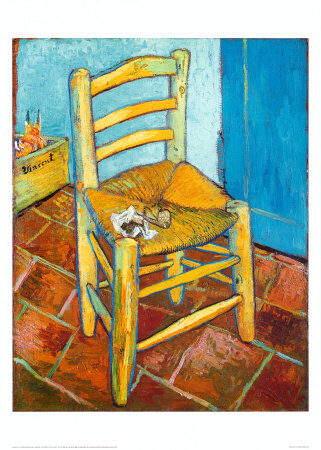For this class we are going to cover complimentary colours, and there will be a painting demo. You are going to need some colours (paint, markers, pastels, ect…), and the sketches that you made last week of your chair, stool – or whatever you had on hand.
First, let’s talk about complimentary colours. We know from our colour-wheel session that red, yellow and blue are primary colours, and orange, green and violet are secondary colours. When we start pairing these up in a specific way, we get complimentary colour pairs.
To make a pair: pick up your colour wheel, and pick any colour. Let’s say, green. Now, look straight across to see what colour is on the other side. You will find that it’s red. Red + Green = complimentary colour (and Christmas, but that’s off topic…).
You will find that when you mix these two colours together you’ll get a muddy brown. A trick to keeping your colours bright when mixing colours: try to stay away from putting complimentary colours together. Then again, if you want to tone down a colour: adding a touch of it’s complimentary will do that perfectly!
Complimentary colours are like a perfect pair – they bring the best out of each other. Used together in a raw form, they may hurt the eyes a little. But if you have a red object that you want to stand out well – using some shade of green in the background will in fact help that red stand out best, according to colour theory.
So, according to this theory if Green makes Red pop, then Blue should make Orange pop. And it does. But if you have that red object, and you use blue in it’s immediate surrounding – it may make your red look like there’s a tint of orange in it. So if you want a cooler red (more of a red-purple than a red-orange), you should try to avoid blue in it’s immediate surrounding. It’s hard to illustrate this with scanned paint, as the computer changes the colours..but they look a little different.
Well, that’s a lot to take in…and I’m sorry to say that it’s not even the tip of the ice burg; but I am stopping there. I just wanted you to get an idea of how these things work.
So let’s go back to last week. Looking at the picture I had presented by Van Gogh, you can see that it uses a complimentary pairing in its colours:

There is definitely an orange-blue combination going on here. This is also a perfect example, where it shows that you can use bright colours to show the pairing – but you don’t need to go to extremes…that’s when your pictures will start hurting your eyes to look at it. Now we’re going to paint / colour a picture based on Van Gogh’s painting.
Take a look at your sketches from last week, and pick the one that you like most. I’m going to pick the one at the top left.
Tomorrow I will show you my chair. This way, it gives you time and space to interpret things in your own perspective, and have your own take on it without influence :o) And, since I was working the weekend, I didn’t have enough time to completely finish mine in between cleaning, packing orders and answering emails.*blushes* Happy Painting / Drawing / Colouring!






No comments:
Post a Comment